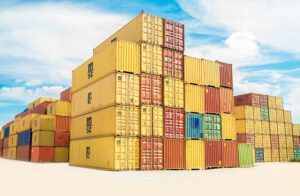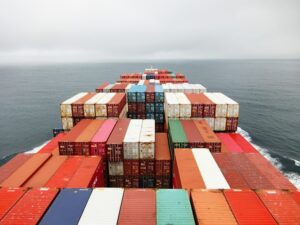As the trade war started by the U.S. heats up, China’s restriction on exports of critical minerals and magnets is set to impact global production of goods like electric vehicles and other renewable energy technologies.
But according to one analysis, the critical minerals restrictions are not about tariffs. Instead they come from China taking “a wartime mindset” as it seeks to achieve military dominance by rapidly expanding weapons production. It would appear the renewable energy technology industry could become a casualty of this arms race.
“China is rapidly expanding its munitions production and acquiring advanced weapons systems and equipment at a pace five to six times faster than the United States,” according to an April 14 analysis by the Center for Strategic & International Studies (CSIS).
“Even before the latest restrictions, the U.S. defense industrial base struggled with limited capacity and lacked the ability to scale up production to meet defense technology demands,” CSIS said. “Further bans on critical minerals inputs will only widen the gap, enabling China to strengthen its military capabilities more quickly than the United States.”
The restrictions on critical minerals and magnet exports announced on April 4 come in addition to 125% tariffs on U.S. goods that China announced after the U.S. targeted Chinese goods with tariffs of 145%,
“The new restrictions are not a ban; rather, they require firms to apply for a license to export rare earths,” according CSIS. “There will likely be a pause in exports as the Chinese government establishes this licensing system.”
China is only in the early stages of setting up the licensing system, The New York Times reported on April 13.
Once the new export license system is created, several U.S. entities, particularly those associated with the defense industry, will likely be cut off from rare earth supplies, CSIS said. Furthermore, China can be expected to use the licensing as a way to strengthen its economic and political power internationally.
“The licensing system may be dynamic and could incentivize countries across the world to cooperate with China to prevent disruptions in their rare earths supply,” the CSIS analysis said.
China was tightening its grip for a while
While critical minerals are mined around the globe, China has worked for several years to achieve world dominance in the supply by cornering the market on refining. China handles processing of more than half the world’s aluminum, cobalt and lithium, more than a third of copper and nickel, 90% of rare earth metals, and nearly 100% of the graphite, the United Nations Conference on Trade and Development reported last year.
China’s restrictions on exports of certain critical minerals, and technologies to produce those minerals has been going on for a while. The restrictions were ramped up earlier this year, apparently in anticipation of a trade war with President Trump. But China began holding back technology for refining critical minerals before that.
The U.S. has begun various efforts to expand sources of rare earth elements (REEs) but they are still far from their goal.
“Even with recent investments, the United States is a long way off from meeting the DOD’s goal for a mine-to-magnet REE supply chain independent of China, and it is even further from rivaling foreign adversaries in this strategic industry,” says CSIS.
While China may eventually ease exports of the minerals for use in renewable energy technology, the supply chain that is so important to that sector now seems even more uncertain than it already was.














